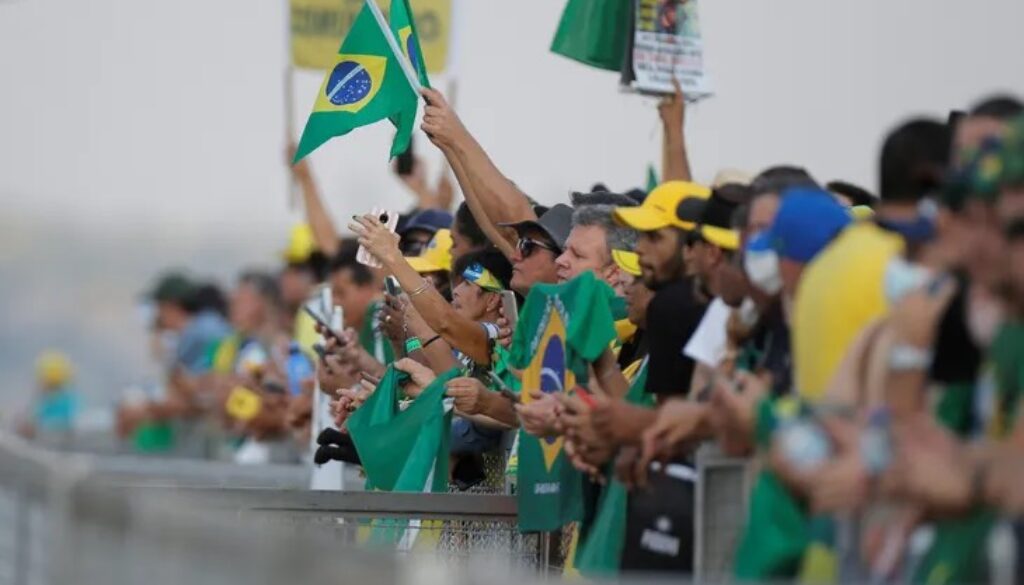Irruption in Brazil: What happens when the public space of cities becomes a territory of violent political dispute?
Getting your Trinity Audio player ready... |
Last Sunday, January 8, barely a week after Lula took office for the third time as president of Brazil, a historic uprising took place in the Brazilian capital as a form of attempted coup d’état and delegitimization of the new presidency. The events were staged by “sympathizers” of former president Jair Bolsonaro who, shouting “Victory will be ours”, stormed the Congress, the Supreme Court and the Planalto Presidential Palace, the three seats of power of the Brazilian State. The protests, which began under the appearance of a massive and federal self-convocation, where the demonstrators came from different states of the country, turned into a violent day with multiple arrests. Although there is no answer to the concerns raised by this episode, there are clear elements to interpret these new attempts at coups d’état under the guise of spontaneous citizen self-convocation.
1. No Trump, no Bolsonaro.
The storming of the U.S. Capitol exactly two years earlier set a key precedent of comparison between that day in the U.S. and what happened in Brazil. The victory of a liberal president over a right-wing one, the context of polarization between two candidates, spaces and ways of doing politics, the narrow difference in votes and the accusation of electoral fraud, were characteristics of both scenarios. The one that triggered the protests on Capitol Hill is too similar to the one that has now taken over the institutions in Brazil. At first glance, we can see how the conformation of a populist, citizen and supposedly self-convened expression, fueled by Trump’s forces, which resulted in violent acts challenging the democratic regime, imprints its character on Bolsonarism.
2. The left in government, the right in the streets.
The beginning of what ended last January 8 in Brasilia dates back to the day of the elections, when the Bolsonarists camped in front of the Army to demand its intervention in what they considered as an electoral fraud. Seventy days passed from that moment until today, when these rallies were in crescendo to the point of moving from different parts of the country to the capital. The question is, why did the security forces and institutions of the responsible executive not take the decision to deconcentrate those people who repeatedly asked insistently for military intervention to correct the alleged fraud? Even in the days of January 8, it is evident how difficult it was for the police to prevent people from entering the interior of government institutions, which should have the maximum security in the national territory. Although part of the hypotheses about this speak of a closeness between members of the forces and former President Bolsonaro, the truth is that it is always more difficult for left-wing governments to contain and dismantle violent, coupist and negationist movements than for right-wing governments to repress and prevent citizen mobilization.
3. Mobilization, demonstration, participation?
The last decades were marked by an inescapable increase of ultra-right and/or extremist spaces whose sympathizers occupied the streets accompanying their representatives and their ideology. Although it would seem that all ideologies play by the same rules, within the democratic regime, the truth is that these political spaces do not do so through the same means as the “moderate” forces.
The active militancy of today’s ultra-right also marks a big difference with other moments in history. In the past, the streets were the point of political dispute for progressive sectors, while for the conservatives, it was the control of institutions and the repression of citizen mobilization.
The origin of the mobilization of ultra-right sympathizers in large Latin American urban centers are theories and hypotheses of electoral fraud, alleged attacks against the candidates of their spaces and accusations of corruption against leftist leaders. Thus, the formation of a violent and disarticulated militant base, together with allies in the media, companies, parties and the judiciary, make up the new power apparatus of the new right wing that seeks to control the institutions and to slow down the transformations developed by the liberals.
Now, in view of these three elements that help us to understand a little more the episodes in Brazil, we are left with the task of separating what is democratic, plural and diverse citizen participation, and above all, fundamentally non-violent, from the destitute, intolerant and hateful expressions that annihilate the “political adversary”, that seek to circumvent the rules of the democratic game and impose their beliefs through force and not consensus. The streets will continue to belong to the crowds and that is how it should be in a society that protects the importance of the manifestation of citizen expressions and above all, that seeks that these manifestations are translated into active, reiterated, binding and transforming participation. Perhaps, it is the exercise of these democracies that those of us who believe in them should strengthen, in order to give a forceful response to those who do not feel heard or represented by the status quo but by charismatic personalities, conspiracy theories or hate speeches that provide them with the representation they do not find in other spaces.
By Joaquin Chesini, Innovación Pública 360° Assistant in Asuntos del Sur.




